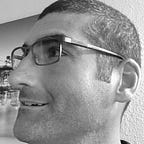Effectively Capturing the Process of Learning
Evaluating students without bench marks that we are used to, opens massive doors in education, yet not one of us has gone through and made it anywhere yet.
What I mean is, without state assessments in place, we are now having to look at our schools with a new perspective in order to capture learning.
If we consider academic proficiencies, we evaluate the end result of the learning process as a means for measurement. This puts all shapes into the same circular hole. The measurement is incorrectly weighted.
The granular inquiry into subgroups show that trends should be addressed based on that product.
If we took a skill such as writing, and used standards to guide us on a grade level basis — why do we wait until the end of the year to consider the efficacy of that process? An entire school year just went by, and we capture and utilize 2 grades in high school, each of the 4 years from your classes.
2 grades every 10 months = student GPA’s
Teachers in the classroom gives upwards of almost a combination of 100 formative assessments annually. Only 2 of them count.
Formative assessments are daily checks for comprehension, skill level, clarity, focus, direction assistance, format help, and guidance. Why do we over look these, and what if we used them instead?
Academic proficiencies are viewed in the United States via a summative and culminating lens. Why is this? Why leave one chance, only repeatable annually? What about proficiency based learning.
My mind is blown here.
According to this article, found on the State of Vermont’s Education Website,
“[Proficiency Based Learning]… is any system of academic instruction, assessment, and reporting that is based on learners demonstrating proficiency in knowledge, skills, and abilities they are expected to learn before progressing to the next level or challenge.”
Make that scale progressive throughout the school year, and measure the demonstration ongoing. Think of how quickly you could identify trends if you observe them while they are happening?
What if it was combined with purpose?
In 2017, Rob Terry writes about the combination of character with proficiency, so a moral consideration to the common good is factored in when intelligence is acquired and eventually used. Intrinsic wantingness to improve the standard of living by collective care and consideration for those around us.
Combine that with constant relevance and purpose which drive curiosity and eventually fosters learning and exploration, tests hypothesis and experimentation, and creates, designs, and builds.
Now measure student progress by evaluating what unit and content can demonstrate competency in the standards that guide the course.
Begin with all skills and knowledge needed to complete the course blank, and check off with notes that track and guide further progress as a student successfully accomplishes tasks.
Students select the measurement. Students chose the content. Students work at their pace. Teachers facilitate the process and measure it as it’s happening to guide it more efficiently.
